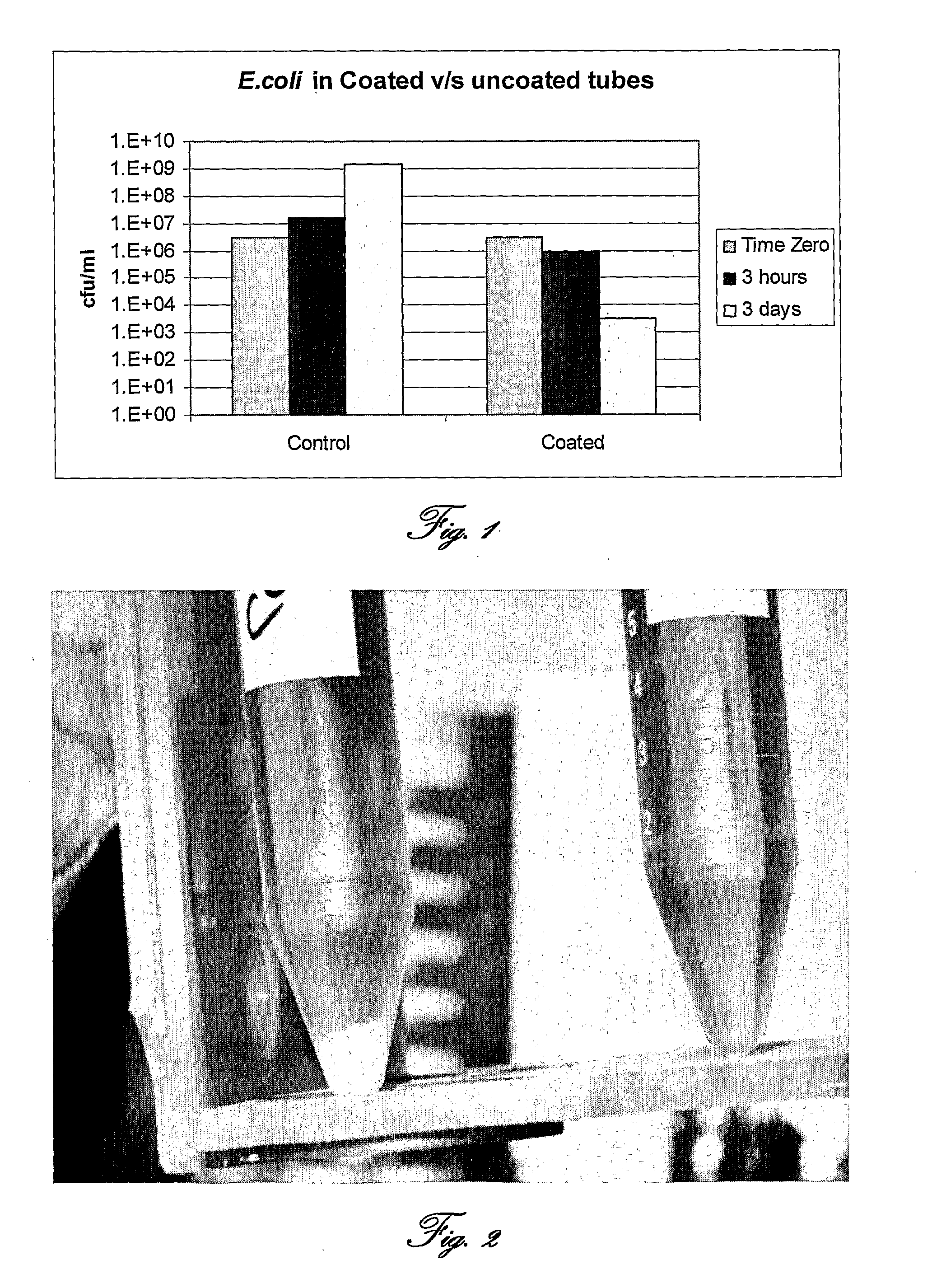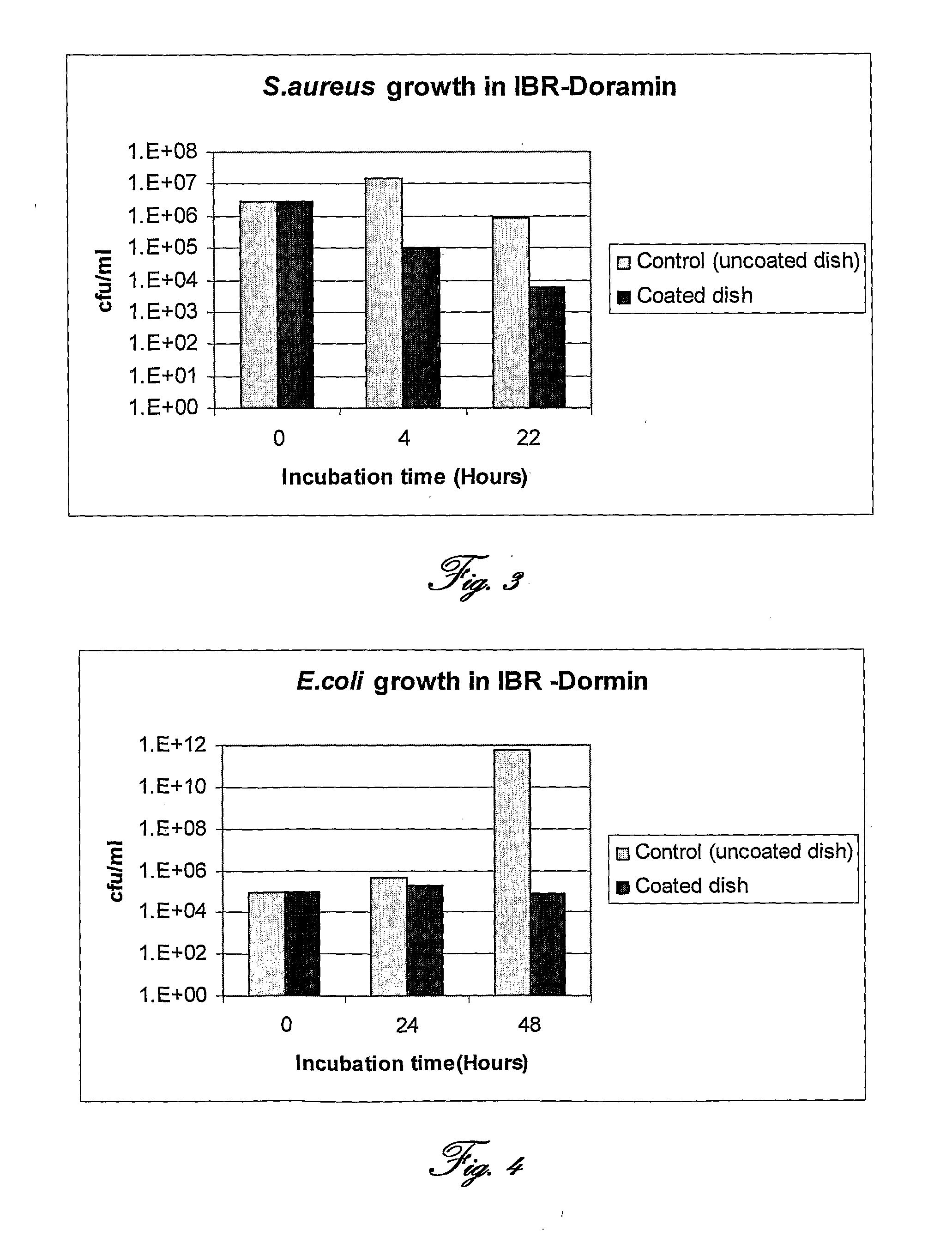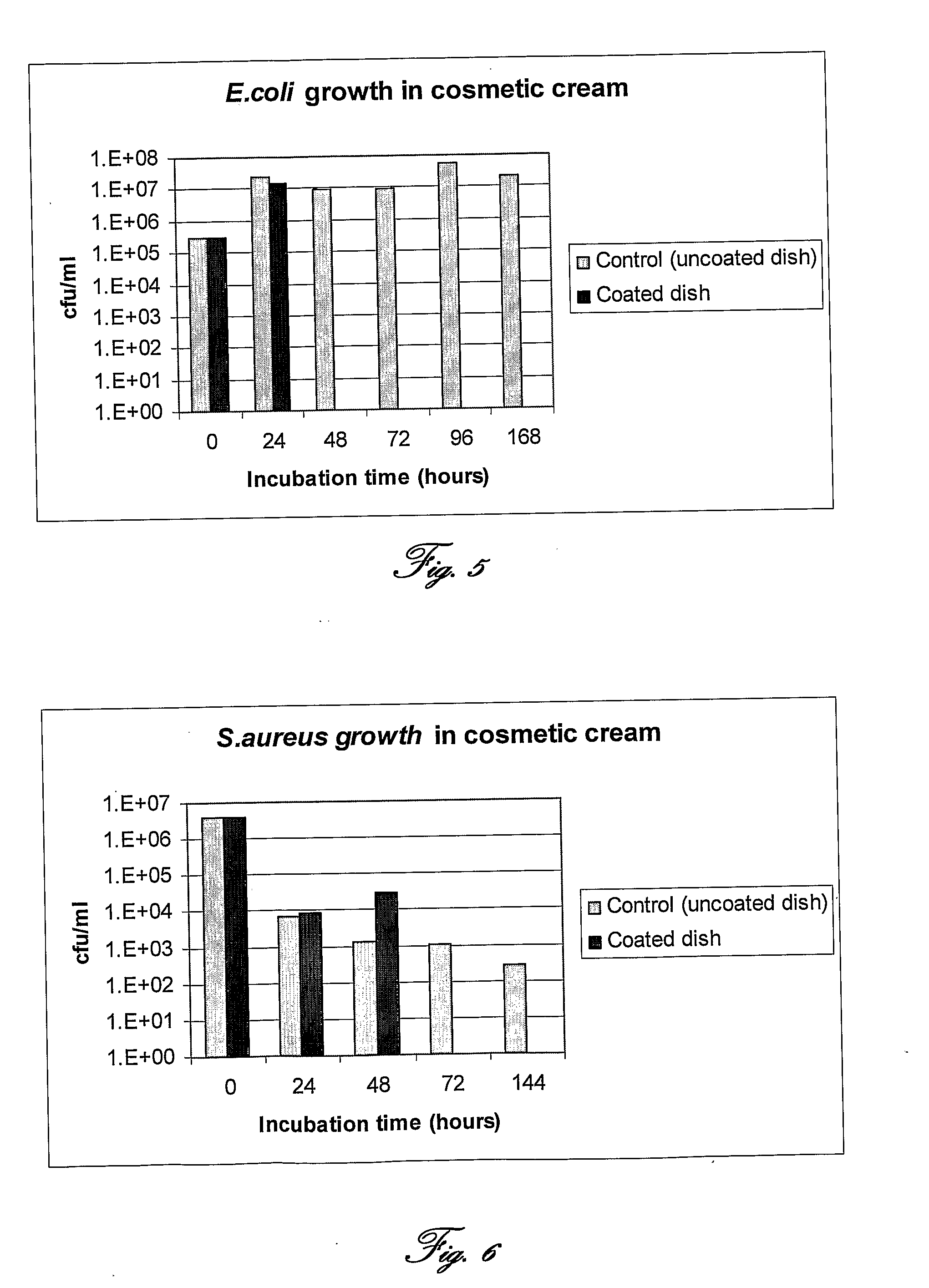Biocidic packaging for cosmetics and foodstuffs
a biocidic packaging and cosmetic technology, applied in biocide, food preservation, plant growth regulators, etc., can solve the problems of cosmetics and food stuffs easily contaminated by bacteria, fungi, toxic preservatives added to cosmetics, and the industry is seeing a significant backlash against preservatives by consumers, so as to effectively preserve the ph & functionality of the surface, disrupt the ph homeostasis and/or electrical balance, and effectively preserve the l
- Summary
- Abstract
- Description
- Claims
- Application Information
AI Technical Summary
Benefits of technology
Problems solved by technology
Method used
Image
Examples
example 1
Comparison of Bacterial Development (E. coli) in TSB in Vials Coated with Nafion™ vs. Uncoated Vials
Materials and Methods
[0134]15 ml vials were coated with commercial solution of Nafion™ (commercially available product of Du Pont) and left to dry. This generated a thin-layer (˜50 microns) of polymerized Nafion™ on the internal surface of the vial.
[0135]Coated and uncoated vials were filled with 10 ml of TSB and inoculated with E. coli (3×106 cfu / ml). Vials were than incubated in a stationary incubation at 30° C. Bacterial count (cfu / ml) was measured at time zero and 3 hours and 3 days after inoculation by sampling the and dispersing bacterial broth on TSA plates and counting 24 hours later incubation at 30° C.
Results
[0136]Reference is now made to FIG. 1 presenting bacterial count of E. coli in Nafion™ coated vs. uncoated vials; and to FIG. 2 showing the comparison of bacterial deposit in uncoated (left) vs. coated vial (right).
[0137]In the uncoated control, bacterial counts increase...
example 2
Bacterial Development in Dormin™ in Coated vs. Uncoated Vials
[0139]Dormins are natural extracts from plants and plant organs in their dormant stage which are able to slow down cell proliferation, maintain younger healthier skin and provide the means for better skin protection. Dormins are being utilized by many cosmetic Companies as active ingredients in cosmetic creams and lotions. Dormins are susceptible to bacterial and fungal contamination.
Materials and Methods
[0140]In the experiment 100 microliters of Staphylococcus aureus culture at a concentration of 5.8×107 cfu / ml were added to 2 ml of preservatives-free Dormin™ solution (obtained from IBR, Rehovot, Israel). S. aureus inoculated Dormin™ solution was deposited into a culture dish coated with a 50 micrometer-thick layer of Nafion™. Bacterial proliferation was monitored after 4 and 22 hours of incubation at 30° C. by plating samples on TSA plates and incubation for 24 hrs at 30° C.
Results
[0141]Reference is now made to FIG. 3 il...
example 3
Bacterial Inhibition in, Preservatives-Free, Commercial Cosmetic Cream
Materials and Methods
[0144]Samples of commercially available cosmetic cream, free of preservatives, were obtained from IBR Ltd., Rehovot, Israel. Starter cultures of E. coli and S. aureus were grown on TSB for 4 hrs at 30° C. and mixed with the cosmetic cream at 1:1 ratio (8 ml of each culture were mixed with 8 grams of cosmetic cream) and deposited in Nafion™ coated dishes. Bacterial development was monitored as described above at time intervals of 0, 24, 48, 72, 96, 144 and 168 hrs of incubation at 30° C.
Results
[0145]Reference is now made to FIG. 5, showing a bacterial development in cosmetic cream in Nafion™ coated dishes; and to FIG. 6, presenting the bacterial development in cosmetic cream in Nafion™ coated dishes.
[0146]FIGS. 5 and 6 shows strong bacterial growth inhibition in the cosmetic cream kept in the Nafion™ coated dishes as compared to the uncoated. Practically no E. coli and S. aureus could be recove...
PUM
 Login to View More
Login to View More Abstract
Description
Claims
Application Information
 Login to View More
Login to View More - R&D
- Intellectual Property
- Life Sciences
- Materials
- Tech Scout
- Unparalleled Data Quality
- Higher Quality Content
- 60% Fewer Hallucinations
Browse by: Latest US Patents, China's latest patents, Technical Efficacy Thesaurus, Application Domain, Technology Topic, Popular Technical Reports.
© 2025 PatSnap. All rights reserved.Legal|Privacy policy|Modern Slavery Act Transparency Statement|Sitemap|About US| Contact US: help@patsnap.com



